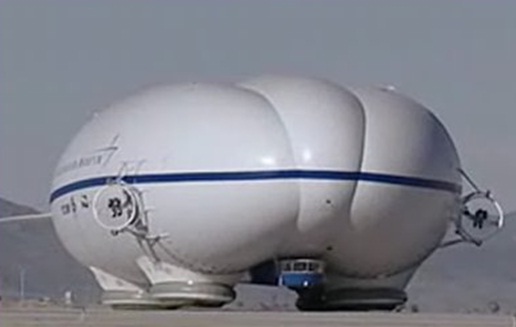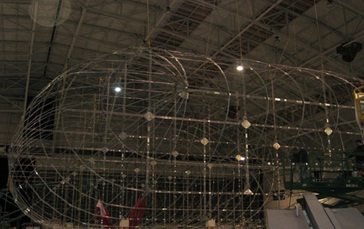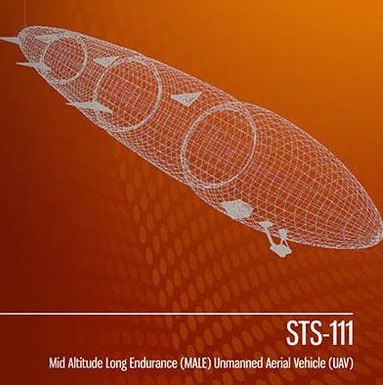





Published on Feb 14, 2025
Wireless communication is simply data communication without the use of landlines. This may involve cellular telephone, two-way radio, fixed wireless (broadband wireless), laser (freespace optics) or satellite communication systems. Mobile wireless technologies are going to act as glue towards bringing together the wired and wireless to share and distribute information seamlessly across each other's areas of reference.
Since from the beginning of wireless communications, there have been a number of developments in each generation. Considering the future generation of wireless communication i.e; 4G .
Stratellite is a brand name trademark of Sanswire for a future emissions-free, high-altitude stratospheric airship that provides a stationary communications platform for various types of wireless signals usually carried by communications towers or satellites . The Stratellite is a concept that has undergone several years of research and development, and is not yet commercially available; Sanswire, with its partner TAO Technologies, anticipates its current testing sequence to include the launch of a Stratellite into the stratosphere .
A new generation of cellular standards has appeared approximately every tenth year since 1G systems were introduced in 1981/1982. Each generation is characterized by new frequency bands, higher data rates and non backwards compatible transmission technology. The first release of the 3GPP Long Term Evolution (LTE) standard does not completely fulfill the ITU 4G requirements called IMT-Advanced. First release LTE is not backwards compatible with 3G, but is a pre-4G or 3.9G technology, however sometimes branded "4G" by the service providers. Its evolution LTE Advanced is a 4Gtechnology. WiMAX is another technology verging on or marketed as 4G.
A "stratellite" is a high-altitude airship (HAA) "25 times larger than the Goodyear blimp" employed much like a satellite for remote sensing, navigation, and communications. Instead of being stationed on orbit, stratellites are positioned in the stratosphere approximately 13 miles above the Earth. This altitude places the airships above both commercial air traffic and weather effects but significantly lower than standard low earth orbits. From this height stratellites can service a 300,000-square-mile-area. The North American Aerospace Defense Command (NORAD) projects that eleven such airships could provide radar coverage of the entire maritime and southern borders of the United States.

The initial Stratellite was 188 feet long, 60 feet wide and 42 feet high. It is provided with a new steering method which uses a hybrid electric system that drives large, slow-turning propellers. This gives the airship helicopter-like agility by being able to move both up and down, and side to side. The outside layer, or "envelope," is made out of a high-tech material called Spectra - a fabric used in bullet-proof vests and parts of space shuttles. Spectra contains fibre 10 times as strong as steel of the same weight and has the unique feature of being easy to cut but virtually impossible to tear.

The inide layer, made from a thin but strong polyester film called Mylar, is fitted inside the envelope and filled with a mixture of helium and air as helium is an inert gas and is therefore not flammable. With this design, the helium expands as the airship rises, forcing air out and lifting the airship.
The cycle continues, allowing the airship to gain more and more altitude until the helium has expanded to fill the envelope completely. Because the pressure is so low inside the envelope, a puncture would only result in a very slow leak, taking a long time to totally deflate. projected to carry payloads as large as 4,000 pounds, and later models are expected to carry over 20,000 pounds of radars and other remote imaging equipment, navigational aids, and telecommunications relays. Stratellites are planned to remain on station for a year at a time and will cost a fifth as much as a comparable satellite.

Stratellites are actually unmanned Kevlar balloons filled with helium. They use thin-film photovoltaic cells sprayed on their surfaces to generate electricity, which drives propellers that work with GPS technology to keep the stratellite positioned over one spot on the Earth's surface. Prototype airships are the second drawback is that satellites are in space, requiring expensive space launches, an additional level of regulation by national space authorities, and an orbital allotment by the International Telecommunications Union (ITU).
Stratellites remain in national airspace and are therefore not subject to these licensing and technology requirements. However, they do make use of space technology and, as stated above, are in development by at least one space industry firm.
These firms are becoming involved with stratellites because they avoid the two main drawbacks of satellites. The first is signal latency, which can cause problems in establishing broadband links.Most telecommunications satellites are in geostationary orbit to remain above a certain point on the Earth's surface. That orbit, however, is 22,240 miles above the Earth, (i.e; in the area called CLARKE'S BELT), which means that a signal going up to the satellite(uplink) and back to the Earth(downlink) travels nearly 45,000 miles, which equates to about a quarter of a second delay. Even users of satellite voice links notice the delay.
Once a Stratellite network is in place, it will provide a national broadband wireless network that will provide voice, video, and broadband internet access to all parts of the country. By linking several Stratellites together they can provide a wireless broadband network that will cover thousands of miles. With a Stratellite network, subscribers will be able to sit in their homes and be connected on their laptops to the internet at high speed. If subscribers need to go to the office, across town, or even to another city, they can close their laptop and take off, reopening the laptop at their new destination and still be connected to the internet. This would allow subscribers the ease of not having to find local access numbers, tie up phone lines, deal with modem hassles, and more importantly, slow speeds. In addition to internet use, "proposed telecommunications uses include cellular, 3G/4G mobile, MMDS, fixed wireless telephony, HDTV, real-time surveillance and others.
Stratelites provide the required facilities of wireless communication more efficiently than the ordinary towers. The Stratellite will allow subscribers to easily communicate in ‘both directions’ using readily available wireless technology.” They minimise the cost of communication. Stratellites present a mobile, low-cost, high-capacity alternative to satellite relays and cell towers. Once the defects of Stratellites have been overcome and become more reliable, they play a vital role in the future generation wireless communication.
1. www.google.co.in
2. www.yahoosearch.com
3. www.howstuffworks.com
4. 21st Century Airships, Inc., High Altitude Platforms, at https://www.21stcenturyairships.com/
5. Geostationary Orbits, in Wikipedia, at https://en.wikipedia.org/wiki/Geostationary_orbit (last accessed Sept. 28, 2004).
6. TWUF, Broadband Takes to the Skiesrt Techdirt, Get Your Wireless Broadband By Stratellite,
| Are you interested in this topic.Then mail to us immediately to get the full report.
email :- contactv2@gmail.com |